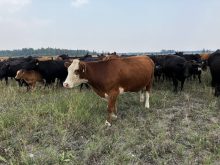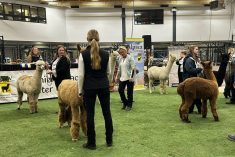Current technology for fertilizing fields with livestock manure is just not yet up to the challenge of variable-rate application techniques, a new Manitoba study finds.
Although variable-rate fertilizer application techniques can be applied to manure application, and farmers are impressed with the idea, the idea is “not commercially feasible now,” according to a release Wednesday from the Manitoba Livestock Manure Management Initiative, which spearheaded the study.
Agra-Gold Consulting and Farmer’s Edge Precision Consulting carried out the study with 13 producers, each of whom provided about two quarters of farmland, offering a “cross-section of Manitoba cropping conditions.”
Read Also

Europe, North America face early wave of bird flu cases
An unusually early outbreak of bird flu cases affecting high numbers of wild birds and poultry farms across Europe and North America is raising concerns of a repeat of previous crises that led to mass culling and food price spikes.
Manure was applied using the drag hose method, while tractor operators varied their application rates according to GPS field maps indicating differing nutrient requirements in different parts of the fields.
Those zones were determined using a satellite imagery system that uses different light bands to create a vegetative index of better-growing parts of the field. The zones were then individually soil-tested to “ground-truth” the reasons for the variability across zones and to determine the optimal nutrient application rate, the MLMMI said.
Adapting VR techniques to manure application would appear to have good potential, project leader Scott Dick said in the release, but we still need to see some refinement in the technology on the applicator.
“Producers accepted the methodology used in creating the different management zones,” he said, “but they weren’t ready to embrace this precision approach yet.”
For one thing, he said, “we found the commercial drag hose equipment used to apply manure just couldn’t accurately and efficiently vary application rates to match specific nutrient needs.”
Speed adjustments
Equipment operators could only adjust application rates by speeding up or slowing down the tractor speed. “On a half-mile run, that could mean between one and three speed adjustments — not a major problem — but enough to affect accuracy,” Dick said.
Besides, without an “on-the-go” sensor to determine soil nutrient levels, planners had to rely on past soil analyses to set their application rates.
“The only way to accurately measure nutrient levels was to send a sample to the lab after application,” Dick said.
Furthermore, unlike commercial fertilizer applications where nitrogen and phosphorus can be applied independently to correct soil deficiencies, the N:P mix in manure is fixed and you can’t adjust individual N and P application rates as you go, the MLMMI said.
Nevertheless, the MLMMI noted, the study does outline ways in which farmers can use precision farming techniques to increase yields and reduce environmental risks.
They can, for example, begin by applying a base rate of manure using conventional techniques, then follow up with a variable rate application of commercial starter fertilizer at seeding time.
“That would give them time to get accurate manure and soil analyses results back from the lab to accurately match nutrient applications with crop requirements,” the MLMMI said.
The study, budgeted for $54,750, was funded jointly by the Manitoba Rural Adaptation Council, the Manitoba Pork Council and its producer participants.















